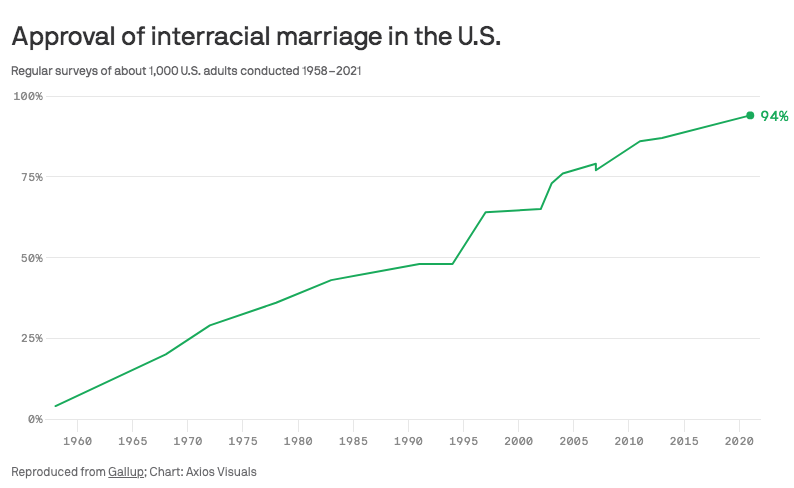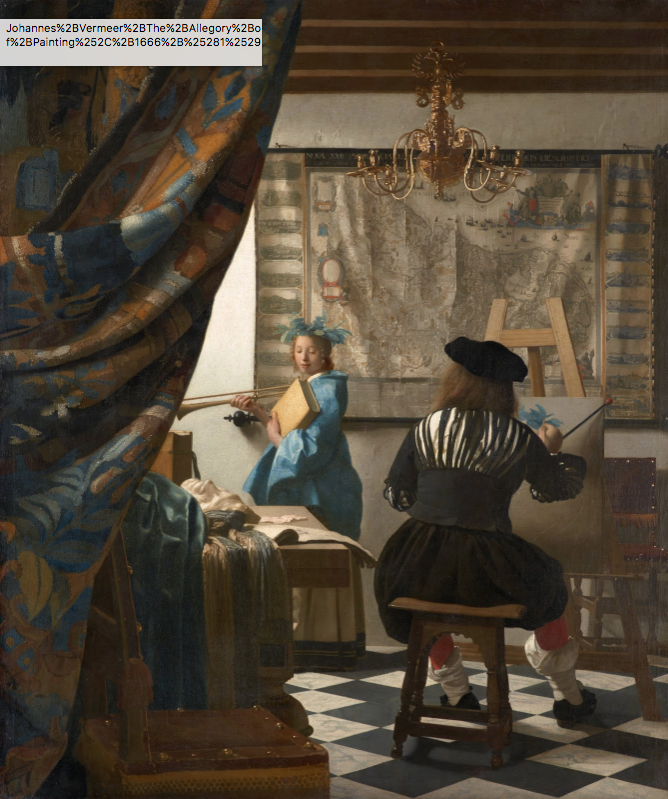Recent articles
1. There’s a lot of debate about whether Trump is delusional or evil. (Why not both?) This WaPo story leans toward the evil interpretation:
Former president Donald Trump’s communications director recounted popping into the Oval Office roughly a week after the 2020 election to find a morose Trump watching TV: “Can you believe I lost to this f—ing guy?” Trump lamented, referring to then-President-elect Joe Biden.
A young aide to Trump’s former chief of staff Mark Meadows recalled Meadows telling her, “A lot of times he’ll tell me that he lost but he wants to keep fighting it.” . . .
“Please recognize that President Donald Trump was in a unique position, better informed about the absence of widespread election fraud than almost any other American president,” Rep. Liz Cheney (R-Wyo.) said. “Trump’s own campaign experts told him that there was no evidence to support his claims. His own Justice Department appointees investigated the election fraud claims and told him — point blank — they were false. In mid-December 2020, President Trump’s senior advisers told him the time had come to concede the election. Donald Trump knew the courts had ruled against him.”
“He had all of this information,” Cheney continued, “but still, he made the conscious choice to claim fraudulently that the election was stolen.”
2. Back in the early 1990s, I recall people saying that racism used to be a problem before the 1964 Civil Rights Act, but was no longer a problem. Check out this graph.

In the 1980s, I recall one politically liberal woman telling me she opposed interracial marriage. I was shocked, as at the time one of my cousins was married to a black guy, as was a second cousin. Another cousin was married to a guy from India. My sister was married to a Hispanic. It was at that point that I realized I’d grown up in a liberal bubble (Madison, WI.) When I got married in 1994, most Americans opposed my marriage.
3. Ben Southwood has a good essay on why low fertility rates are not likely to persist in the long run:
A simplistic little model I built suggests that if one percent of the fertile UK population had a fertility rate 1.2 above the 1.8 norm, it would take over 200 years for the population to beat its current level, assuming zero immigration and everything staying static.
But I still think the story is true and important: humans are like bacteria, and we are evolving bacterial resistance to the antibiotic of low fertility.
4. The Hudson Bay Company was quite large:

Right after buying Alaska, we came close to buying the HBC. Had we done so, we would have eventually absorbed British Colombia and Canada’a far northern islands. The US would then be almost twice it’s current size:
In 1869, the United States offered the Company $10,000,000 for its land. If it had gone through, it would have meant that the USA would today control the vast majority of what instead became Canada. Under political pressure from Britain, this very generous offer was rejected and the Company agreed to cease to be a geographical entity, transferring all of its land to the British Government.
4. Reason magazine’s Matt Welch has a good article on immigration and jobs:
Policy analysts who favor reduced immigration to the United States have always had one plausibly compelling argument: If you cut off the supply of cheaper labor, they maintained, employers would be forced to raise wages for lower-skilled, native-born workers, who would then demonstrate the fiction behind the contention that there were some jobs “Americans just won’t do.”
Well, we have just conducted a fascinating real-world test of that hypothesis. Beginning with the restrictionist presidency of Donald Trump in 2017, and then supercharging through the effective 2020–21 border-closure triggered by the COVID-19 pandemic, the U.S. took in about 1.7 million fewer working-age immigrants than would have come at the prior intake rate, according to a recent analysis by Giovanni Peri, economics professor at University of California at Davis.
Alas, those not in the labor force Americans never showed up:
This should have been the moment when the startlingly high number of prime-aged Americans classified as Not in the Labor Force (“NILFs,” no really) got off the sidelines and back into the job market.
And yet: “That did not increase work rates or labor force participation of Americans who are already here,” says American Enterprise Institute economist Nicholas Eberstadt, author of the freshly revised (with post-pandemic intro) 2016 book Men Without Work. “We’ve now got this incredible peacetime labor shortage, and we also have a drop in the number of people in the workforce, by at least a ballpark of 3 million lower than we would have expected on trend before COVID. And that’s leaving out immigration, so it’s actually lower.”
5. File this story under “politics is a helluva drug“:
For more than a decade, few places in the nation were associated with anti-vaccine movements as much as Marin County, the bluff-lined peninsula of coastal redwoods and stunning views just north of San Francisco. . . .
Now, Marin County’s Covid vaccination rate among all residents is 91 percent, compared with 68 percent nationwide.
The county has also shed its reputation as an anti-vaccine haven in part because of how much vocal resistance has taken root elsewhere. Marin County was once faulted for having a childhood vaccination rate of 78 percent. Now, almost every county in America has a lower Covid vaccination rate among children.
The anti-vaccine movement used to be a place where the left met the right, but increased polarization during the pandemic has made such a combination difficult to sustain, said Jennifer Reich, sociology professor at the University of Colorado Denver and the author of “Calling the Shots: Why Parents Reject Vaccines.”
6. On the same note, study after study shows that Republicans are more likely to die of Covid:
Last month, though, the National Bureau of Economic Research published an important study from researchers affiliated with Yale University. They took 577,659 death records from Ohio and Florida between January 2018 and December 2021 and matched the decedents to a 2017 voter file. In other words, they were able to identify the partisanship not only of the places those people lived but of the people themselves.
What they found is that the rate of excess death — that is, deaths above the expected toll relative to the pre-pandemic baseline — was higher for Republicans, particularly after vaccines were rolled out.
“Registered Republicans in Florida and Ohio had higher excess death rates than registered Democrats, driven by a large mortality gap in the period after all adults were eligible for vaccines,” the researchers write. “These results adjust for county-by-age differences in excess deaths during the pandemic, suggesting that there were within-age-by-county differences in excess death associated with political party affiliation.”
It turns out that watching Tucker Carlson is bad for your health:
COVID-19 vaccines have reduced infections and hospitalizations across the globe, yet resistance to vaccination remains strong. This paper investigates the role of cable television news in vaccine hesitancy and associated local vaccination rates in the United States. We find that, in the earlier stages of the vaccine roll-out (starting May 2021), higher local viewership of Fox News Channel has been associated with lower local vaccination rates. We can verify that this association is causal using exogenous geographical variation in the channel lineup. The effect is driven by younger individuals (under 65 years of age), for whom COVID-19 has a low mortality risk. Consistent with changes in beliefs about the effectiveness of the vaccine as a mechanism, we find that Fox News increased reported vaccine hesitancy in local survey responses. We can rule out that the effect is due to differences in partisanship, to local health policies, or to local COVID-19 infections or death rates. The other two major television networks, CNN and MSNBC, have no effect. That, in turn, indicates that more differentiated characteristics, like the networks’ messaging or tendency for controversy, matter and that the effect of Fox News on COVID-19 vaccine uptake is not due to the general consumption of cable news. We also show that there is no historical effect of Fox News on flu vaccination rates, suggesting that the effect is COVID-19-specific and not driven by general skepticism toward vaccines.
7. Liz Truss came into office with bold plans to boost growth. Now it all seems to be falling apart:
A former Cabinet minister who supports the PM’s agenda also cast heavy doubts on her having the time to enact any of it.
“Who could argue with focusing on growth? But this takes time and there is a lot of uncertainty attached to it. It’s not like we haven’t been trying to encourage economically inactive people into work since 2010, for example. And some it will probably get dinged [scrapped] anyway, like the planning reforms.”
One Tory veteran of previous parliamentary battles adds: “There is no way they are getting planning through. They are just going to be stuck.”
Planning reforms means zoning reforms in American lingo. The supply side tax cuts are also gone.
8. Remember when it was the GOP that opposed strict zoning rules? Here’s Bloomberg:
Florida Governor Ron DeSantis’s administration is urging the city of Gainesville to abandon its zoning reforms after it became the first in the state to vote to eliminate single-family zoning citywide this summer. In an unprecedented move for the agency, Florida’s Department of Economic Opportunity (DEO) sent a letter to Gainesville Mayor Lauren Poe objecting to the city’s zoning plan last month. Gainesville’s City Commission is poised to vote to move forward with the changes anyway on Oct. 17.
The action raises the specter of Republican-controlled state governments stepping in to stop cities from passing progressive housing reforms — and mystifies some conservatives who support deregulation in the housing market.
I’m not “mystified”. The GOP abandoned free markets long ago.
9. California just legalized jaywalking.
A new law signed on Friday will allow Californians to legally jaywalk without being ticketed.
Now it’s time to legalize drugs and prostitution.
10. Philipp Markolin has a very good essay on why it is so hard to push back against conspiracy theories. One issue is politics:
The conspiracy myth playbook
The best predictor of believing in a conspiracy theory? Already believing in others
Has anybody noticed something weird going on in the US?
January 6th and Trump’s election steal myth, anti-vaccine conspiracy fantasies, lableak and biosafety fearmongering, QAnon, white genocide, moral panics about immigrant caravans or LGBTQ minorities; many of the most hateful and conspiratorial narratives seem to aggregate around a political movement, leader, and ideology. Prima facie, it is odd to see such a diverse set of conspiratorial ideas neatly align with a large segment of the population that happens to vote for the same political party under the whip of an autocratic leader. Even before the weird cult-like and parasocial worshiping of its demagogue, the MAGA movement is primarily animated by conspiracy myths, and this is dangerous.
It is also a strategy.
Political leaders and movements can use conspiracy myths to gain power, and this is not unique to the US by any means, we could also talk about Poland, Italy, and Hungary, or Myanmar, Nigeria, the Philippines or Brazil, and many other nations currently in democratic decline. Making use of conspiracy myths is one of the oldest tricks in the book that authoritarian leaders and movements use to attack opponents, galvanize followers, shift blame or responsibility, and undermine institutions that threaten their power.
11. Jordan Schneider discusses the new controls on tech exports to China:
Regardless of how narrowly Washington tries to draw the impact of these regs to allow for firms like LAM and ASML to continue working with Chinese companies on fabricating lagging edge chips, the explicit decision to try to freeze Chinese domestic manufacturing above a defined level will be perceived as a deeply provocative move, with lasting commercial, technological, and geopolitical repercussions. . . .
These export controls are even more dramatic of a “Sputnik moment” than what Trump delivered with Huawei’s foreign direct product rule. Even though the Administration may not have consciously timed the rollout of these regulations to the opening of the Party Congress, Chinese officials will certainly assume they have, in turn coloring their view of America’s intentions.
The honest way of competing with China would be to allow more Chinese engineers to immigrate here. Instead we shamefully try to sabotage their tech industry. What a disgrace.



